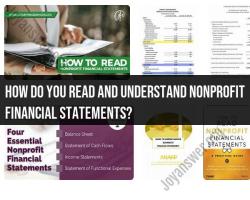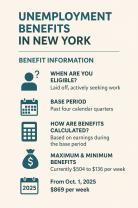What is the best allocation for a’s portfolio?
Determining the optimal portfolio allocation for an individual, often referred to as "A" in this context, depends on various factors such as their financial goals, risk tolerance, investment horizon, and current financial situation. There is no one-size-fits-all answer, and portfolio allocation is a highly personalized decision. Here are some general strategies that individuals commonly consider when determining their portfolio allocation:
Risk Tolerance:
- Assess how comfortable "A" is with risk. Generally, higher risk tolerance may lead to a higher allocation to equities, while lower risk tolerance may lean towards a higher allocation to more stable assets like bonds.
Diversification:
- Spread investments across different asset classes (e.g., stocks, bonds, real estate) to reduce risk. Diversification can help mitigate the impact of poor performance in any single investment.
Investment Goals:
- Consider short-term and long-term financial goals. For long-term goals, such as retirement, a higher allocation to growth-oriented assets like stocks might be suitable.
Age and Investment Horizon:
- Younger individuals generally have a longer investment horizon, allowing for a potentially more aggressive allocation with a higher proportion in equities. As individuals approach retirement, they may consider a more conservative allocation to protect capital.
Regular Reassessment:
- Periodically reassess the portfolio based on changes in financial goals, risk tolerance, and market conditions. Regular reviews ensure that the portfolio remains aligned with the individual's objectives.
Professional Advice:
- Consider seeking advice from a financial advisor who can provide personalized recommendations based on "A's" specific circumstances, financial goals, and risk tolerance.
Asset Allocation Models:
- Explore established asset allocation models, such as the Modern Portfolio Theory (MPT) or the 60-40 (stocks-bonds) rule, as starting points. These models provide guidelines for balancing risk and return.
Emergency Fund:
- Ensure there is an adequate emergency fund in place before allocating funds to more volatile or long-term investments.
Tax Considerations:
- Be mindful of tax implications. Tax-efficient investing can enhance returns, and certain investment accounts (e.g., IRAs, 401(k)s) offer tax advantages.
It's crucial for "A" to conduct a thorough self-assessment and, if needed, consult with a financial professional to create a portfolio allocation strategy that aligns with their specific financial situation and goals. Additionally, market conditions can change, so periodic reassessment is important to ensure the portfolio remains in line with evolving circumstances.
- Factors influencing optimal portfolio allocation
Optimal portfolio allocation is the process of determining how to distribute an investor's assets among different classes of investments, such as stocks, bonds, and real estate. The goal of optimal portfolio allocation is to maximize expected returns while minimizing risk.
There are three key factors that influence optimal portfolio allocation:
Risk tolerance: An investor's risk tolerance is their ability to withstand the ups and downs of the market. Investors with a high risk tolerance are comfortable with more volatility in their portfolio, while investors with a low risk tolerance prefer a more stable portfolio.
Investment goals: An investor's investment goals are their reasons for investing. Common investment goals include saving for retirement, funding a child's education, or buying a home. An investor's investment goals will influence the types of investments they choose and the risk they are willing to take.
Time horizon: An investor's time horizon is the length of time they plan to invest for. Investors with a long time horizon can take on more risk, as they have more time to ride out market downturns. Investors with a short time horizon need to be more conservative, as they have less time to recover from losses.
Diversification strategies for asset allocation in a portfolio
Diversification is a critical component of optimal portfolio allocation. Diversification means investing in a variety of asset classes that have different risk and return characteristics. By diversifying, investors can reduce their overall portfolio risk without sacrificing too much expected return.
There are three main types of diversification:
Asset class diversification: This involves investing in a variety of asset classes, such as stocks, bonds, real estate, and commodities.
Sector diversification: This involves investing in companies from a variety of sectors, such as technology, healthcare, and consumer goods.
Geographic diversification: This involves investing in companies from a variety of countries around the world.
Rebalancing techniques to maintain target asset allocation
Over time, the asset allocation of a portfolio will naturally drift away from its target allocation due to changes in market prices. Rebalancing is the process of bringing the portfolio back to its target allocation.
There are two main methods of rebalancing:
Time-based rebalancing: This involves rebalancing the portfolio at regular intervals, such as once a year or once a quarter.
Market-based rebalancing: This involves rebalancing the portfolio only when the asset allocation deviates from the target allocation by a certain percentage.
Asset class selection and weighting for portfolio construction
The specific asset classes and weightings that are appropriate for a portfolio will vary depending on the investor's risk tolerance, investment goals, and time horizon. However, there are some general guidelines that can be followed.
Stocks: Stocks are typically the riskiest asset class, but they also have the potential for the highest returns. Investors with a long time horizon and a high risk tolerance may want to allocate a significant portion of their portfolio to stocks.
Bonds: Bonds are generally less risky than stocks, but they also offer lower expected returns. Investors with a short time horizon or a low risk tolerance may want to allocate a larger portion of their portfolio to bonds.
Real estate: Real estate can be a good diversifier for a portfolio, but it can also be illiquid and difficult to sell. Investors should only allocate a portion of their portfolio to real estate that they can afford to lose.
Seeking professional guidance for personalized portfolio allocation
Creating an optimal portfolio allocation can be a complex task. Investors who are not comfortable making their own investment decisions may want to seek professional guidance from a financial advisor. A financial advisor can help investors develop a personalized portfolio allocation that is tailored to their specific needs.
I hope this information is helpful.












